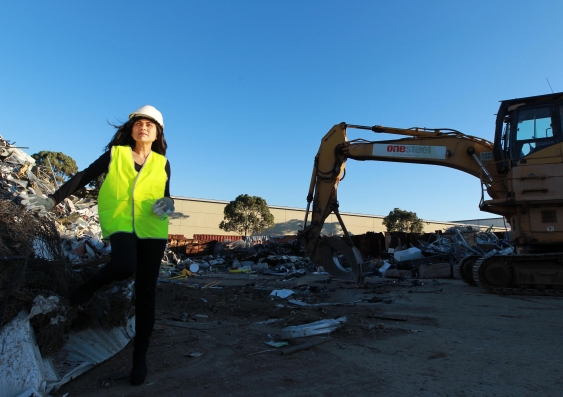UNSW advice steers ACT towards more efficient use of waste
Burning materials that could be more productively reused elsewhere is not the way to go, UNSW Sydney has told an ACT government review.
Burning materials that could be more productively reused elsewhere is not the way to go, UNSW Sydney has told an ACT government review.

Stuart Snell
0416 650 906
s.snell@unsw.edu.au
A UNSW Sydney submission to the ACT government’s review into waste management outlines a way to achieve the government’s primary targets to divert most waste away from landfill and for the local sector to be carbon neutral by 2025.
The submission does not support, however, burning waste as one of the four government recommendations to achieve its primary waste reduction targets. Incineration for energy is not an optimal way to deal with many forms of waste, which can instead be reformed into re-usable materials, the submission says.
“I applaud the ACT government for its very proactive stance on environmental sustainability and waste management, as well as its target to increase its already laudable rate of recycling from 70 per cent to 90 percent,” said Professor Veena Sahajwalla, Director of UNSW’s Centre for Sustainable Materials Research and Technology (SMaRT) Centre, a day after the submissions deadline.
“However, part of the solution is not to incinerate waste for energy but instead should be to reform the components of waste into valuable materials as inputs for manufacturing for existing and new products which then also provides a boost for the local manufacturing industry and economy.
“Incinerating plastics, glass, timber and other materials that have already been highly engineered, mined and processed is extracting the lowest value from them, whereas the way to achieve the highest value is to reform and then re-use them. This in turn reduces mining and processing of raw materials for the future.
“The process of burning waste to create energy means that recyclable materials are lost forever as renewable resources. Metals can be repurposed over and over and even many plastics can be reformed and reused a number of times.”
UNSW has scientifically developed a range of technologies in the world’s first microfactories to take the recycled containers and materials put out in council bins, along with other waste streams, and convert them into reformed materials such as metals alloys, plastic filament for 3D printing, and glass panels for building products.
Professor Sahajwalla is calling on the ACT government to trial the technology and provide an incentive framework for local industry to adopt the waste microfactories to help achieve the government's environmental targets and avoid a least-optimal method of incinerating waste for energy.
The process of burning waste to create energy means that recyclable materials are lost forever as renewable resources. Metals can be repurposed over and over and even many plastics can be reformed and reused a number of times.
Last week the Senate Standing Committee on Environment and Communications Inquiry into waste and recycling report recommended against the incineration of waste for energy, and the NSW Environment Protection Authority, the NSW Department of Planning and Environment and the NSW Department of Health each in April recommended against the first proposal in NSW to build a waste energy plant, while in March a NSW Parliamentary Committee also recommended against it. A final decision is yet to be made.
“Our new recycling and reforming process as a microfactory has the potential to deliver economic and environmental benefits wherever waste is stockpiled,” Professor Sahajwalla said. “The main impediment to deploying these new methods is the lack of incentive by governments for industry to adopt them.”
The microfactories consists of a series of small machines and devices that use patented technology to turn discarded products and containers into new and reusable materials. It involves a number of small machines for this process and they fit into a small room. The discarded devices and items are first placed into a module to break them down. The next module may involve a special robot to extract useful parts.
Another module uses a small furnace to separate the metallic parts into valuable materials, while another one reforms the plastic into a high-grade filament suitable for 3D printing. A microfactory can involve one or a series of modular machines and be easily transported or relocated to where a stockpile or suitable site exists.
Costings show an investment in a microfactory can pay off in less than three years. Glass stockpiles alone amount to more than 1 million tonnes a year nationally. In total, Australia produces nearly 65 million tonnes of industrial and domestic solid waste each year.
Professor Sahajwalla said microfactories could not only produce high performance materials and products, but eliminate the necessity of expensive machinery, save on the extraction from the environment of yet more natural materials, and reduce the impact of burning waste and dumping it in landfill.
“Rather than export our rubbish overseas and to do more landfill for waste, the microfactory technology has the potential for us to export valuable materials and newly manufactured products instead,” Professor Sahajwalla said. “Through the microfactory technology, we can enhance our economy and be part of the global supply chain by supplying more valuable materials around the world and stimulating manufacturing innovation in Australia.”
SMaRT website: http://smart.unsw.edu.au/